One Piece or Naruto, the comparison often draws out intense emotions among their respective fans.
Both anime are undoubtedly one of the greatest and most popular anime of all time, but which one is better?
We will analyze the most important elements of a great anime, such as story and character development, and decide which show excels in each specific area.
Ideally, fans should just enjoy both stories without having to hate the other. They are both great works of art and should be appreciated accordingly.
More factors contribute to the success of each franchise, but this article simply seeks to explore both One Piece and Naruto from a writing perspective. How could they resonate with so many people?
What makes them stand out? How are they still so popular and relevant? What are their weak points? And how do they compare to each other?
Plot
Setting

One Piece
Unique and vast world
The worldbuilding of One Piece is vast and ever-expanding. Even after decades of material, it still feels like we have only seen a glimpse of all the islands and oceans.
Real-life places, such as Arabasta and Water 7 inspire the locations. But on the other hand, can they also be very unique, like Punk Hazard and Sabaody.
Diverse and colorful
The world also feels extremely colorful and diverse, with many different races, pirate crews, and cultures. Even if we haven’t seen much of it, it feels like there is a rich history. There is also a great balance between modern and in-store technology. Nothing is too out of order, like the Cola Burst and Den Den Mushi, but it all blends well with the rest of the world.
Naruto
Smaller scale, but more (known) history
The world of Naruto feels much smaller in scale but does feel ‘deeper’ than One Piece because we know more about the history of the world and how this history relates to present events. One Piece is still ongoing, so there is a big chance that One Piece will fill the ‘Hundred Year Void,’ but as of now, it is not yet the case.
Some parts feel unexplored
With that being said, Naruto still feels quite unexplored. There is so much potential, but we don’t know enough about the world. We haven’t fully explored each Hidden Village (let alone the smaller villages), the Great Ninja World Wars, and the history of the different Clans.
The Hidden Villages are also part of a much larger Land. What happens in the Land of Fire, for example? What happened to the Uzumaki Clan? Why does Konoha have so many clans and diversity while other villages don’t?
One Piece tackles this problem in a much smarter way than Naruto. We haven’t seen the world of One Piece in its totality either, so why does it feel different? Simple: we haven’t seen all of the world, but when we do visit a location in One Piece, this location is fully explored, whereas in Naruto this is not the case.
Winner: One Piece (1-0)
Magic System

Soft vs hard magic system
One Piece has more of a soft magic system, with less explaining and more action. Although this does fit with the writing style, it does feel less ‘rich’ than Naruto’s magic system. The magic system of Naruto is more logical and thought-out than that of One Piece.
Almost every jutsu has an explanation, and we are provided with lots of details about the cause and effect of different attacks.
This is not to say that the magic system in One Piece isn’t detailed and rich.
There is Haki, the different types of devil fruits, and many other unique abilities. It’s just that they don’t necessarily have to make sense, whereas Naruto has a cohesive magic system.
Conclusion
The magic feel of One Piece relies more on the vast world than on the magic system itself, while Naruto relies more on the magic system than on the setting.
Winner: Naruto (1-1)
Theme
Both tackle crucial elements of society
Theme is a very underrated aspect of a great story. Both Naruto and One Piece address important topics such as racism, betrayal, trauma, and war. Naruto tackles these themes on a more individual level, as to what these events can do to a person mentally and how they can recover from them.
One Piece largely explores these themes on a societal level, compared to Naruto.
Despite having their way of approaching these topics, both stories are not inferior to each other when it comes to story themes.
Winner: Tie (2-2)
Pacing
Pacing is one of the main points of criticism for both Naruto and One Piece, and rightfully so. Both the anime and manga of both franchises have had problems with pacing. From dragged-out battle scenes to tiresome dialogue scenes, the pacing is something both series can improve on.
One Piece however has an insanely long story that requires great pacing. But Naruto, on the other hand, has a lot of filler arcs during the series, which makes it harder to adapt to the pacing.
Winner: Tie (3-3)
Storyline
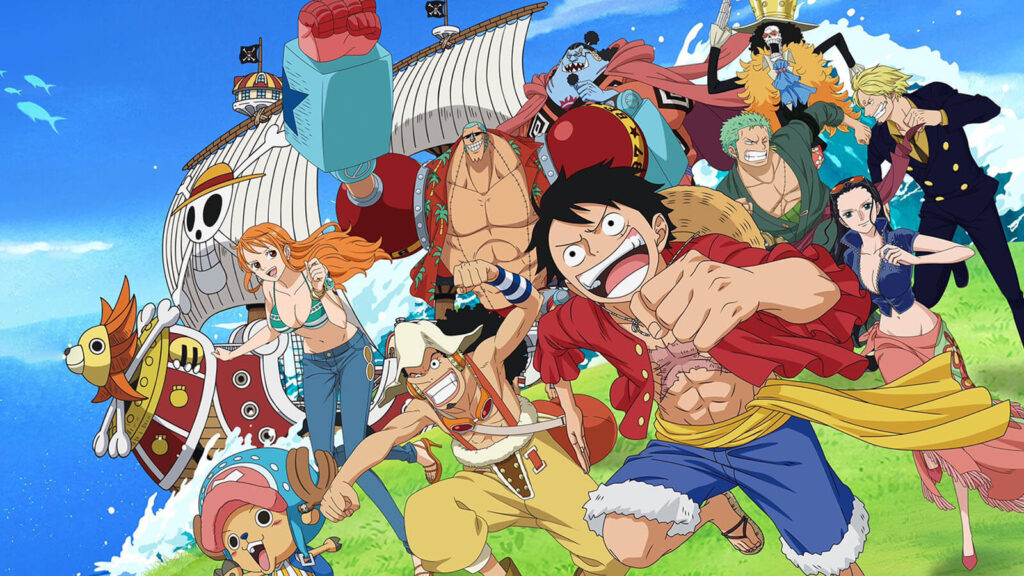
One Piece
Strengths
Keeps us engaged for decades on multiple fronts
One Piece has a plot that operates on two levels. There are the events that happen on the particular island the Straw Hat Crew is on, and there are the events that happen in the grand scheme of things.
Able to manage multiple storylines
If we look at the grand scheme of things, the plot of One Piece is unprecedented. So many elements keep us at the edge of our seats: the Five Elders, World Nobles, Marines, Poneglyphs, Yonkos, and Raftel. There are characters we are dying to see in action, such as Mihawk, Shanks, and Dragon. Another remarkable aspect is how we witness Luffy influencing all these entities.
Has the luxury to be playful
One Piece also has the luxury of being able to not make sense. For example, an entire plot point can be created because Luffy wants meat, and we’re all okay with it. Naruto doesn’t have this luxury, which is why we have to critique it in a more ‘serious’ way. It might be unfair, but it is a situation that One Piece deliberately created for itself.
Areas for improvement:
Arc-level storylines can be similar
However, if we look at the sequence of events on the specific islands, One Piece can be a little repetitive. The ‘recipe’ for each island is often very similar.
For example, there is a villain who terrorizes the local population (Doflamingo, Kaido, Crocodile), Luffy befriends the local population, we are introduced to certain struggles of new/local characters (Vivi, Rebecca, Hyogoro), Luffy fights the main villain while Zoro fights the second strongest.
Luffy will often imprison himself or lose contact with the rest of the crew, and will defeat the main villain with the help of the entire island.
There can be slight differences; for example, some arcs highlight certain characters more than others, but the main way arcs progress are very similar.
It works within the storyline and style of One Piece, but it is hard to unsee the pattern once you pay attention to it. Naruto develops individual arcs better, but the story ‘in the grand scheme of things’ is much more refined in One Piece.
Naruto
Strengths
Unique approach to each arc
In Naruto, there isn’t a greater plot happening ‘behind the scenes’ like there is in One Piece. There also isn’t a standard recipe for each arc like there is in One Piece.
Each arc in Naruto presents its own set of dramatic moments and mechanisms for suspense; this creates better-written and less predictable individual arcs.
For example: the Chunin Exam, Pain’s Assault, and Five Kage Summit
Areas for improvement:
The underwhelming defeat of villains
However, there have been certain mistakes that have been made in the overall plot of Naruto.
For example, the storyline required a shift of the main villain multiple times in the story (from Orochimaru to Akatsuki to Obito/Madara). This necessity caused some major villains like Orochimaru, Deidara, Danzo, and Madara to be disposed of in an underwhelming way.
In One Piece, every major villain has a proper introduction and ending.
The latter part of the story
Another criticism of Naruto is its ending. We have written more about some aspects of this in this article. At the time of this article, One Piece has not ended yet so perhaps it is open for criticism later.
The biggest points of criticism are the diminishing presence of major well-written characters like Neji, Shikamaru, and the Kage (mainly due to a huge imbalance in power-ups) and an underwhelming final battle against Madara and Kaguya and Fourth Great Ninja War.
Nonetheless, the later events of Naruto brought some of the best fights (Kakashi vs Obito, Madara vs Guy, Naruto vs Sasuke) and moments of the story.
Conclusion
Even though the individual arcs of Naruto are often better written than those of One Piece, the overall plot of One Piece has more complexity. Naruto has also made several mistakes with its villains and ending. Taking these things into account, One Piece wins in this category.
Winner: One Piece (4-3)
Characters
Villains
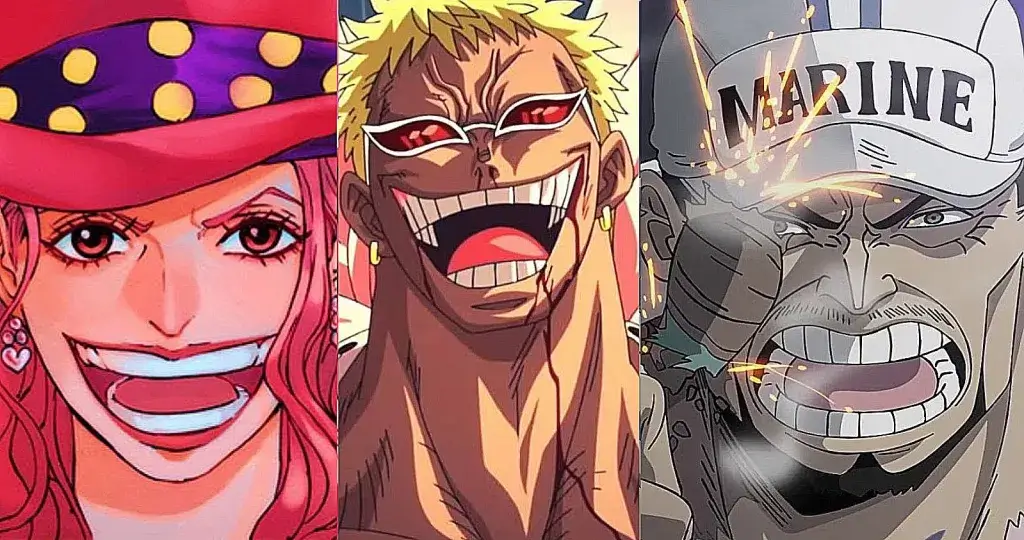
One Piece
Strengths
Iconic villains in all parts of society
One of the standout features of One Piece is its diverse array of villains and their contributions to world-building. Each faction in the world, be it pirates, marines, governments, scientists, or warlords, boasts its own villain.
The larger-than-life personas and appearances of these villains inevitably render them iconic—a unique strength in One Piece’s storytelling. While many of them might seem ridiculous in other anime, when combined with the intricate plot and world-building of One Piece, they become truly iconic.
Areas for Improvement:
No room for development
Given the large number of main and secondary villains, this critique doesn’t apply to every single One Piece villain. However, a large number of villains have no room for development and become static evil characters.
Some exceptions are Kuzan, Buggy, Judge Vinsmoke, and Katakuri. The problem with these static villains is that both their actions and their defeat are very predictable. The main villains of One Piece generally fall into this category (Kaido, Big Mom, Hody Jones, Akainu).
They don’t cause the protagonists to develop
This criticism is not entirely fair because there have been cases of characters developing while fighting villains (Nami with Arlong, Robin with Lucci, and Chopper with Wapol). However, this development is usually caused by Luffy and the Straw Hat Crew, rather than the villain itself.
There isn’t a moral battle’ with the character that forces the character to change his views. An example of this would be Naruto and Pain, or T’Challa and Killmonger.
We understand that this is not essential for good villains, but it would be nice to have a ‘dynamic villain’ instead of a ‘static villain’ once in a while. Some characters have potential for this, like Smoker, Crocodile, and Katakuri.
Naruto
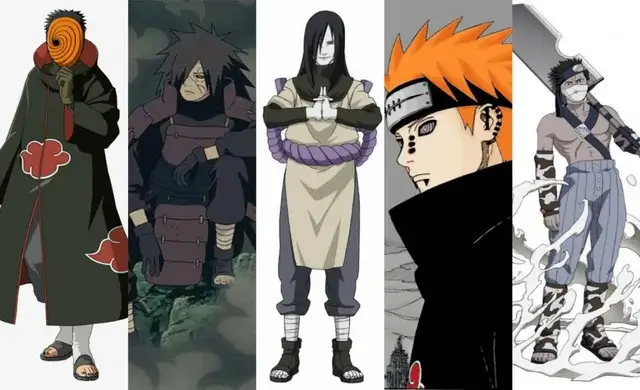
Strengths
Variety in motivations
While Naruto features a smaller number of villains, it is still renowned for its amazing antagonists. There is greater variety in their motivations: some are purely evil (Orochimaru, Kakuzu), some believe they are doing the right thing (Obito, Danzo), while others are simply aligned with villains due to personal circumstances (Kisame, Haku).
The villains in Naruto are often just as well developed as the protagonists, if not more so. Even minor villains like Sasori and Zabuza have fully explored their backstories, character development, and the potential for change.
Directly challenge the main characters
Many Naruto villains directly contribute to the main character’s development, not just in terms of physical strength but also in their mentality and outlook on life.
Sometimes characters can also change negatively because of the villains, for example, Sasuke and Orochimaru.
The villains in Naruto also demonstrate the capacity for change, emphasizing their humanity even when committing evil deeds. Examples of this transformation include characters like Gaara, Obito, and Kurama.
Areas for improvement
Villains die in an unsatisfying way
However, a notable criticism of Naruto villains is that they often have unsatisfying conclusions. While this is more a critique of the plot than the characters themselves, it does affect their ‘iconic’ status. In some cases, villains also have a change of heart that doesn’t suit their character at all. For example: Orochimaru and Kabuto.
Not every villain is as exciting
Additionally, not every Naruto villain is equally imposing, whereas in One Piece, villains usually become more formidable with each arc. For instance, Kaguya did not generate as much excitement as Madara, while Kaido generated even more suspense than Doflamingo.
Nevertheless, the character creation and development of Naruto villains give them the edge in this department.
Winner: Naruto (4-4)
Characters and development

Are One Piece characters flat?
On the surface, One Piece characters may seem flat compared to Naruto, and there is some truth to that. Naruto characters have more moral ambiguity and more potential areas for suspense. The depth of Naruto characters gives more room for unique ways of development.
For example, in an individual comparison of two main characters like Kakashi and Zoro, most people would argue that Kakashi is more developed and has more depth.
If you also compare Luffy and Naruto, Luffy is much more simple-minded and is often seen as ‘one-dimensional,’ despite both characters being quite similar to each other. They are both very optimistic and have a strong resolve, but Luffy has hardly developed since the beginning of the series. Many critics of One Piece say this is a significant reason for their dislike of the story.
Collective character development vs individual character development
However, the strength of One Piece lies in collective character development rather than individual development. The way the main cast relates to each other and is loyal to each other is developed in a better way than in Naruto. Such that it almost makes the viewer feel part of the crew.
The Straw Hat Crew’s loyalty to Luffy is the one thing that enables them to overcome any internal conflict, and Luffy’s ‘simplicity’ is essential to this. His character serves as a catalyst, inspiring growth, challenging beliefs, and being the standard to which other characters hold themselves.
The individual complexity and development of Naruto characters, coupled with the collective growth and unity of One Piece characters, make this round a tie.
Winner: Tie (5-5)
Fight Scenes

One Piece
Strengths
Emotional involvement and suspense buildup
One Piece fights are explosive and full of drama, emotion, suspense, and action. The multitude of Devil Fruits, Haki powers, and other abilities leads to unique and satisfying battles, particularly those involving main characters and villains.
The suspense of One Piece fights is also carefully built up, so much so that One Piece offers some of the best ‘final blows’ of any anime.
Areas for Improvement:
Lack of strategy
However, some One Piece fights lack strategic depth, resulting in somewhat predictable outcomes. Nevertheless, the emotional investment in characters and the arc’s buildup compensates for this, ensuring that One Piece fights remain engaging, even if they often conclude similarly.
Pacing and battle lineup
One notable flaw in One Piece fights is the occasional slow pacing and filler fights, especially in the midst of the clash between Luffy and the main antagonist.
The ‘battle lineup’ can also become predictable, with Luffy facing the main villain, Zoro taking on the second strongest, and the rest of the crew engaging other opposing members. Introducing more diverse matchups akin to Ace vs. Blackbeard, Law vs. Smoker, and Zoro vs. Hody Jones could add intrigue.
Naruto

Strengths
Diverse and unique
Naruto fights may not always carry the same emotional weight as One Piece, but each fight offers a distinct experience. Every jutsu clash and character approach to battle is unique. For instance, in battles like Pain vs. Jiraiya, Kakashi, and Naruto, the diverse fighting styles of the characters contribute to a varied audience experience.
Areas for Improvement:
Shift towards strength over strategy
Towards the series’ end, Naruto’s fights tended to rely more on strength and less on strategic depth. The extreme power differences between characters made previously relevant individuals and their jutsus seemingly insignificant. While some fights, like Guy vs. Madara, were well-executed, many war-related battles lacked cohesion and suspense.
Conclusion
In conclusion, One Piece excels at delivering explosive and emotionally charged fights, although some may lack strategic depth. Naruto, while not always as emotionally intense, stands out for its diverse and unique fight scenes. The variety of different fight scenes in Naruto gives it a slight edge because it can also offer us emotionally charged fights at times.
Winner: Naruto (6-5)
Character Design & Art Style
There are few other manga that have an art style as unique as One Piece. Admittedly, many One Piece characters look ridiculous (Shinobu, Ivankov, and Wapol), but the show offers some of the most unique and captivating character designs of all time (Whitebeard, Ace, Kaido, and Aokiji).
While other shows often give multiple characters the same clothing, One Piece designs a character from top to bottom. This attention to detail contributes to the uniqueness and memorability of the characters.
While Naruto’s art style is by no means subpar, it doesn’t break new ground or redefine the medium. The illustrations serve the narrative effectively without pushing the boundaries of artistic innovation.
Winner: One Piece (6-6)
Conclusion

Both shows are undoubtedly among the greatest shows of all time and, despite their flaws, have much to offer every anime fan. Depending on your preference for a show, you might favor one over the other. One Piece has a stronger plot and world-building, while Naruto excels in villains and fight scenes.
Naruto also takes a more philosophical approach to its characters, while One Piece tackles broader global issues like racism and injustice.
Ultimately, every fan has a different connection with either show and has valid reasons for preferring one over the other, but we scored it a tie.

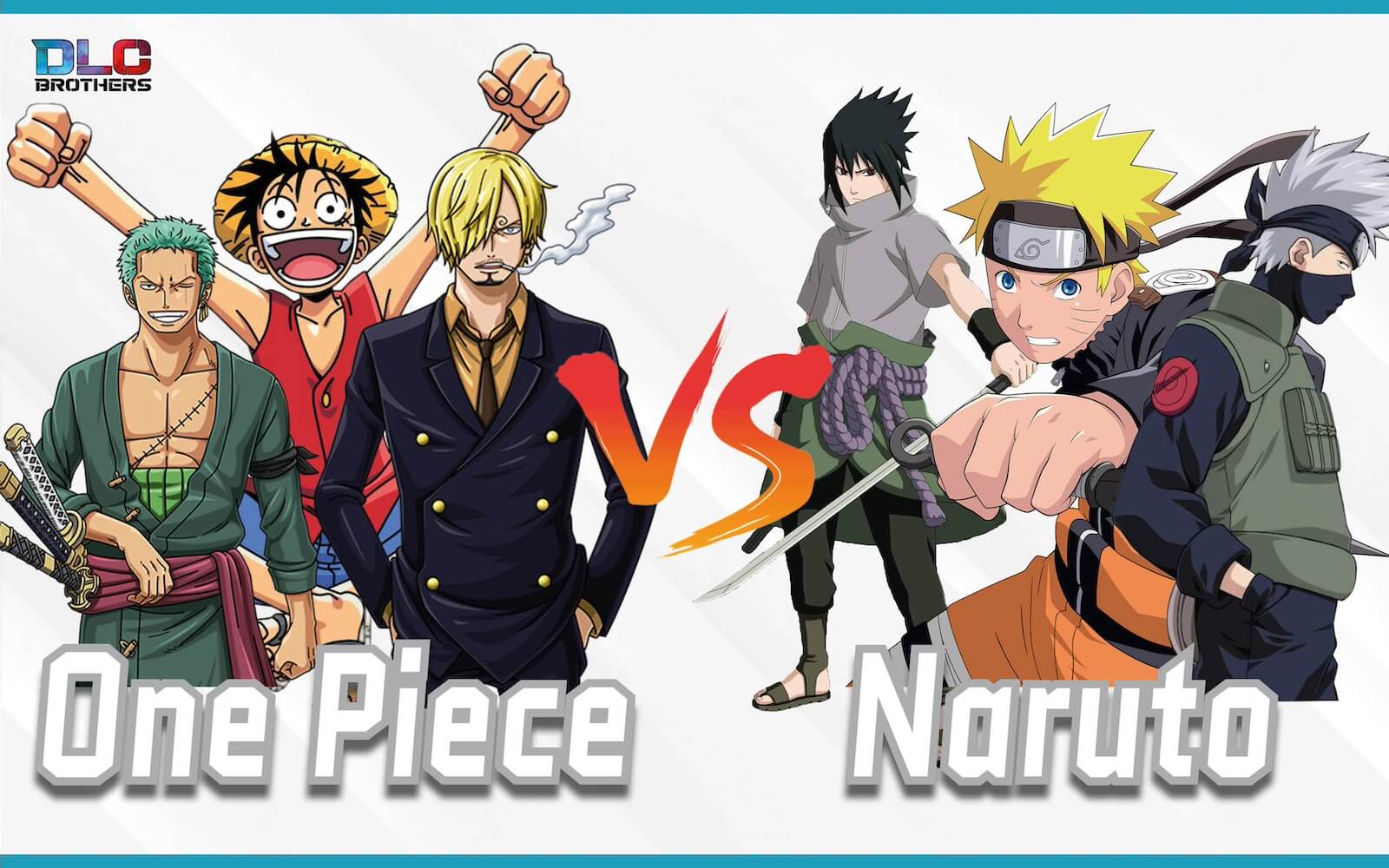
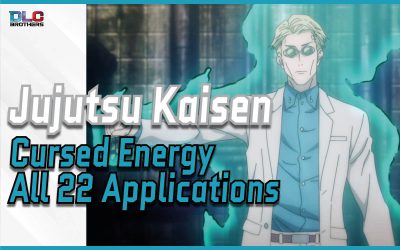
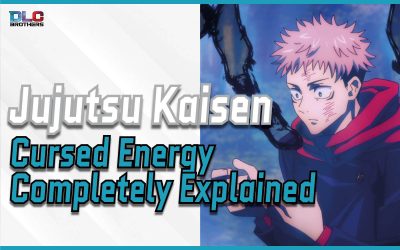
0 Comments